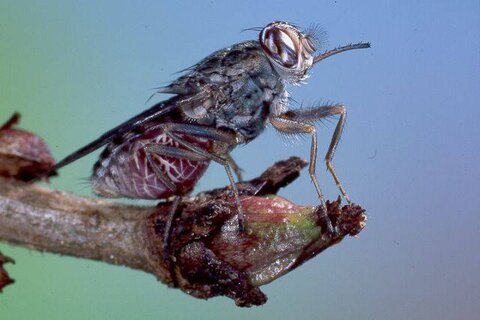We've controlled the tsetse, so why carry on?

At present, community-based programmes to control tsetse take place over relatively small areas of about 1000 square kilometres. Typically, the control area will border territory where tsetse are present and uncontrolled and, consequently, face a constant risk of reinfestation, given the distances that tsetse can fly (for more information click here).
If a controlled area is subject to invasion from all sides, then a treated block of 100 square kilometres is completely re-infested within a year and even a large-scale area of 10,000 square kilometres is lost within two years (Hargrove, 2000). The only way to prevent these losses is to prevent re-invasion by deploying baits.
In most small-scale control programmes, therefore, tsetse control is not a one-off project. There will be a need for continued control for the foreseeable future, until such time that much larger contiguous areas are free of tsetse.